
L’amour Neige de soleil
Music by Daniel Schell
Libretto by Daniel Schell, based on the work by Christian Dotremont
Short Introduction
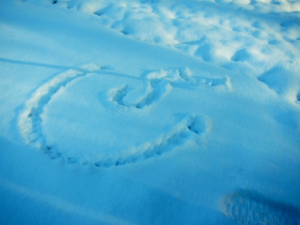
www.clicmusic.eu
«Neige de Soleil »
‘Neige de Soleil’ was created May 27, 2016 at Theatre Poeme, Brussels, during Festival Ars Musica
Opera
Music Daniel Schell
Libretto Daniel Schell, based on the work by Christian Dotremont
Audio-Visual
Live recording, Theatre Poeme, Brussels June 2016
Video, on YouTube ‘Amour, neige de Soleil’
Recording in Studio Igloo, Brussels, October 2015
Video, On YouTube ‘Amour, Neige de Soleil’
Sound on SoundCloud ‘Amour, Neige de Soleil’
Presentation
Version 009 from 2016 09 16
Argument
During May 1976, Christian Dotremont- poet, graphist and founder of the CoBrA group – aged 54- leaves for Laponia (Lappland), accompanied by a young student, Caroline G, here called l’Accompagnatrice (The Accompanist). Interested in his work, she finishes an essay on him, at the Université de Bruxelles. She will share his trip which will bring them to Ivalo in Lapland, where they will stay two weeks in a inn.
Christian’s bad health does not allow him to carry his suitcase. The Accompanist, instead, will carry it and take care of the shopping, the post office… She will take care of him, look after his rest each afternoon, so that he keeps the energy to walk and work. In those days, Dotremont’s health is not brilliant. He walks extremely slowly, for short distances only and not more than five minutes. He must stop frequently in order to get his breath back. His life is in danger. Each moment of his life is lived as the last one, as if his days were numbered.
During the day, Christian works on his poems, which he translates then in his famous « Logogrammes ». Those logograms area sort of free calligraphy which illustrates the text of his poem. A well informed reader like his brother Guy Dotremont, can decipher the logograms and restitute the text.
The gesture of the logogram is free and that is typical of the CoBrA movement founded by Christian. It can be thought of as action-painting à la Jackson Pollock, except that there is a literary content behind the symbols.
Christian draws also logograms in situ, in the beautiful snow of Laponia: the « logoneiges » (logosnow). The scenes involving logoneiges will be the high point of this opera. Christian draws them with a stick. He also uses his body, for instance, by rolling himself in the snow.
The construction of the libretto
The libretto tells about a day of Christian D., following, hour by hour, an almost fixed ritual. Morning writing, noon eating, afternoon nap, walking, visit to the local café.
The text of the libretto comes directly out of his poems, texts, logoneige and logogrammes titles.
The opera is for one singer. The action takes place in one room of the inn. On the right, a virtual door opens on the other room, the one of the accompanist, with whom he speaks often. The ‘logo-neige’ (literally logo-snow – logo is from the Latin ‘I talk’ and neige is from the French snow)) performances happen in another part of the stage.
The construction insists on the ideas dear to Dotremont, in particular the sense of spontaneity,
of game, the repetition, and the ephemeral. The notions of repetition and ephemeral play a leading role in the music and in the construction of the play.. Dotremont is a poet who exagerates the natural writing and makes it pictorial. His white page can be the snow and, in this case, his approach belongs to land art.
With the Accompanist, he repeats actions – for instance film shooting – absolutely identical in all their details. He will repeat them in each of his travels to Laponia (he shall make eleven of them). Same entry to- and behaviour in- the bar, same menu, same camera viewing angle from a travel to another, same attitudes
Apart of that, he is very funny and fills life and words with a blend of humour and gravity.
« Pour un rien plein »
The logoneige “Pour un rien plein” (“full with nothing”) comes back as a leitmotiv. Dotremont will draw it many times.
« Notre temps compte-t-il un événement positif, c’est la découverte du rien plein par une réunion imposante quoique peu visible… » (“ Does our time count a positive event, it is the discovery of a full nothing by an imposing, though hardly visible meeting… “) (Strates, 1963). « Pour un Rien, Plein » is explained largely in his logogramme text « Nous n’avons rien à faire de l’Au-delà ». Guy Dotremont explains it as follows :
« The snowy plain of Lapland is emptiness, however this emptiness is quickly filled… an absolute calm, the smallest thing animates it, a slight wind shakes a blade of grass and the space is filled. ». This vision seems to be close to the Buddhist emptiness, however, according to Guy Dotremont again, Christian should not have shown a special interest to the Buddhism.
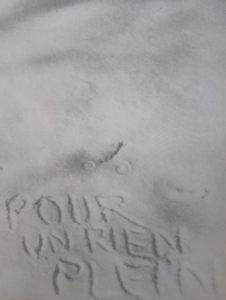
Figure 1 « Pour un Rien Plein », logoneige, 1963, (Excerpt from Revue Strate No1, Photo Christian Dotremont)
Singer:
Christian Dotremont, barytone sung by Gregory Decerf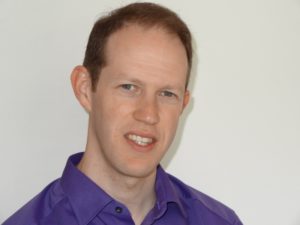
Possibly, l’Accompagnatrice, actress (dancer), still.
Musicians :
String quartet, ‘Quatuor Tana’
The Tana string quartet is specialised in the interpretation of contemporary composers.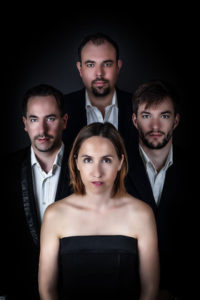
The musicians are :
Antoine Maisonhaute, violin 1
Ivan Lebrun, violin 2
Maxime Desert, alto
Jeanne Maisonhaute, cello
Production of 2016
Theatre Poème, dir. Dolores Oscari
Ars Musica festival, dir. Bruno Letort
Stage Director : Pascal Crochet
Graphic handling of the logogrammes : Simona Gropeneanu / Infographics: Marie Kasemierczak
Scoring: Olivier Verschueren at Clic Music
Scenography : Alicia Jeannin – Lights : Florence Richard Set: Benoît Francart
Construction of the composition
The play alternates between monologs in Sprechgezang and melodies.
The melodies are written on poems which Dotremont wrote more or less simultaneously, during the year 1976. Those are mostly from the logogrammes and logoneiges. The logoneiges texts, by necessity, are composed of a few words only, whereas those of the logograms contain sometimes three pages.
The musical construction is analogue to the one I used in my previous piece ‘Digue’, also written on a poem by Dotremont. I handle the logogrammes/neiges and translate them musically by strings movements, mainly by the cello. The process is frequently used throughout the piece but not all the time. The graphics of the logogrammes are used in the score as themes. They are translated in analogue movements: ‘Cobra’ movements after all. Those graphic themes are handled in solo or multiple voicing, in canons or other sequences. They are then included in different types of harmonisation.
Set
Chair, table, bed, wood burner, suitcase…
Suggested: Dotremont’s room communicating, through an open door, with another room that cannot be seen
Outside: snow landscapes and Ivalo village.
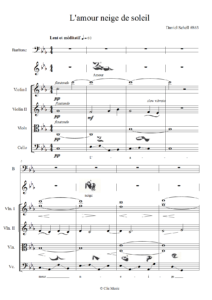
Photos of the logo-neiges/grammes, by Caroline Ghyselen, and other photographers, Radomir… ,.
Some Logoneiges
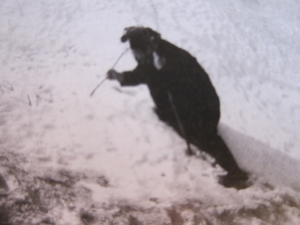
Figure 2 Chistian drawing the logoneige « Ici ma terre d’élection mon village de vagabond » (“Here my land of election, my village of vagrant”) (Photo Radomir 1973 p186 Guy Dotremont
« Serpent de neige sifflant au soleil » (Snow snake whistling in the sun) is a particularly remarquable logogram text which Christian draws in the snow. Caroline Ghyselen tells its performance in the three photos herunder.
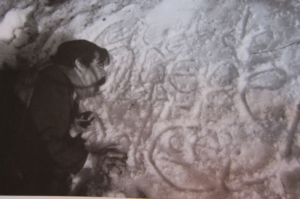
Figure 3 Christian draws ‘Serpent de neige sifflant au soleil (1) 1976. (Photo Caroline Ghyselen)
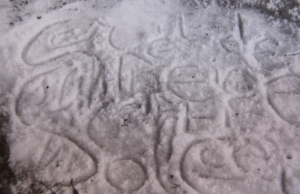
Figure 4 Christian draws ‘Serpent de neige sifflant au soleil (2) 1976. (Photo Caroline Ghyselen)
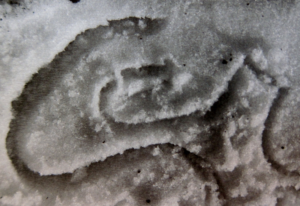
Figure 5 Christian draws ‘Serpent de neige sifflant au soleil (3) 1976. (Photo Caroline Ghyselen)
***
Notes from Daniel Schell’
www.clicmusic.eu